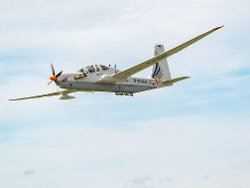In Germany there are still areas without cell phone reception even in 2020. Telekom wants to change that and is designing a flying cellular platform. After the first successful tests, the development of a 60 meter wide prototype is now pending.
Deutsche Telekom plans to soon supply its customers with mobile communications and the Internet from the stratosphere. Together with the British startup Stratospheric Platforms Limited (SPL), voice and data connections in 4G quality via a platform flying at the edge of the stratosphere have been successfully tested, said the Bonn-based Dax group. This was successful in several test flights at the beginning of October in Bavaria at an altitude of 14 kilometers. "We have shown that we can bring fast Internet and connectivity everywhere in the future," said the head of the telecommunications infrastructure subsidiary Deutsche Funkturm, Bruno Jacobfeuerborn, who is also on the SPL supervisory board.
The aim is to close dead spots in remote areas in this way. So far, the big US technology groups Facebook and Google have made a name for themselves with similar projects.
While Facebook has now crushed its program with the so-called Aquila drones, which are supposed to supply regions without network coverage with Internet, Google is sticking to its loon balloons. It is about improving internet access worldwide, according to the Loon website, which mainly refers to projects in African countries such as Kenya and Mozambique.
Telekom expects the high-flying platforms, which are to be carried by remote-controlled aircraft, to complement the existing cellular network on the ground – especially in more remote areas such as in the mountains. During the tests, a smartphone was connected to Telekom's terrestrial cellular network via the antennas on the aircraft. Due to the altitude and the almost unobstructed view of the ground, according to Telekom, an aircraft can supply radio cells with a diameter of up to 100 kilometers with special antennas. The customer should not be aware of the transition from a classic cell phone mast to a flying antenna.
SPL, of which Telekom is the largest shareholder, is currently working on the development of a hydrogen-powered remote-controlled aircraft that will operate as a mobile radio mast in the stratosphere and enable 4G and 5G network coverage. According to SPL, the platform is around 60 meters wide, which is roughly the span of a Boeing 747, but weighs only 3.5 tons. According to its own information, SPL is currently in the middle of talks for a new financing round. The startup, which was founded six years ago, is planning its first flight in mid-2022. Operations should then start in 2024.
. (tagsToTranslate) Economy (t) Cellular (t) 5G (t) Deutsche Telekom (t) Mobile Internet (t) Airplanes (t) Drones (t) Google (t) Facebook (t) Start-ups
